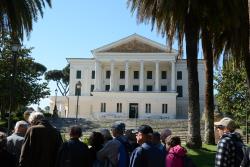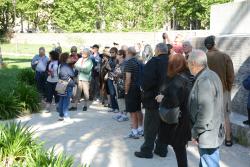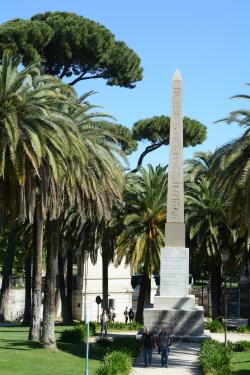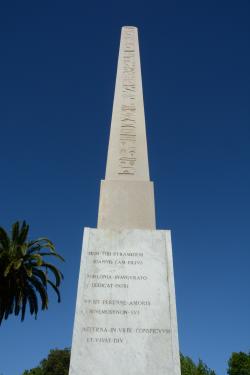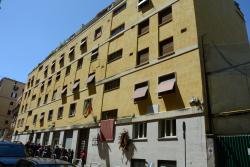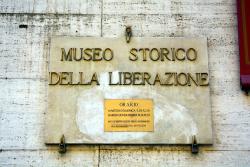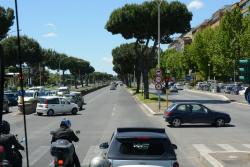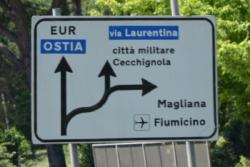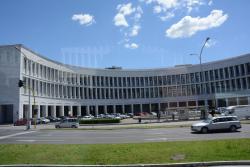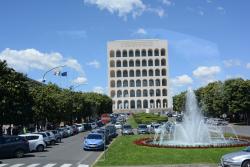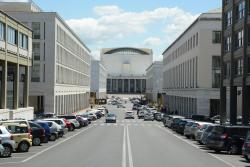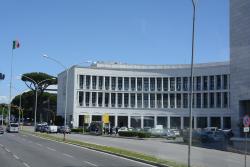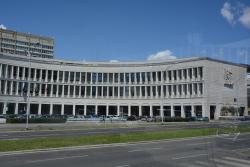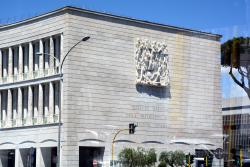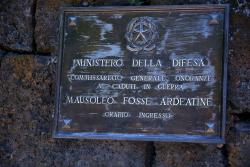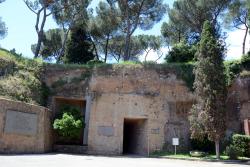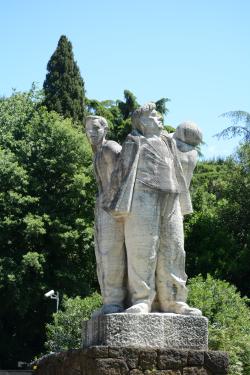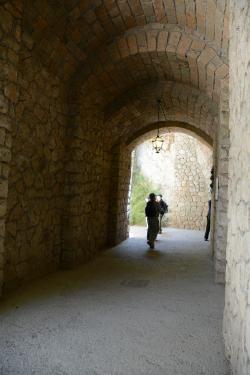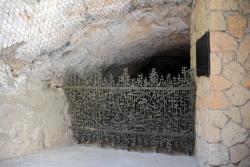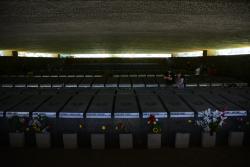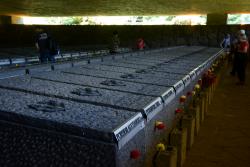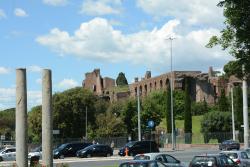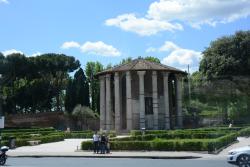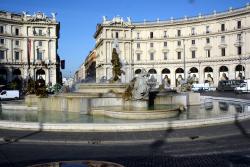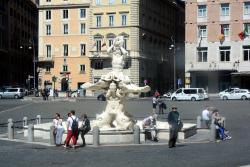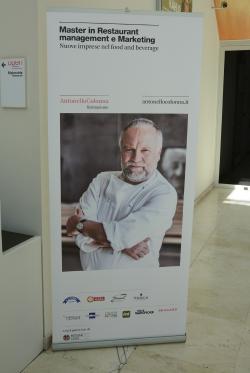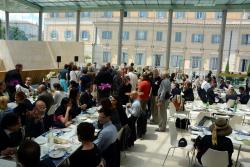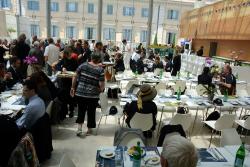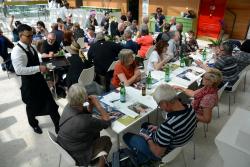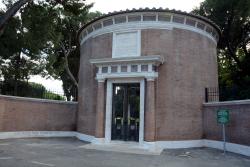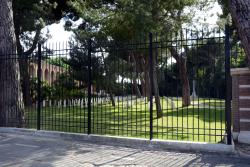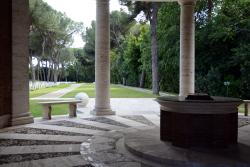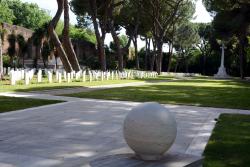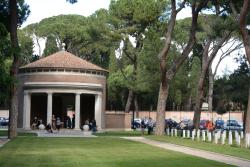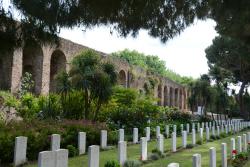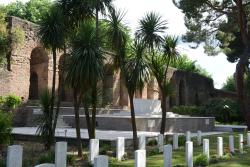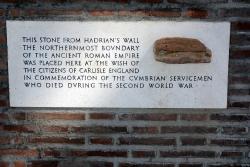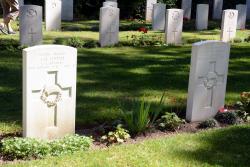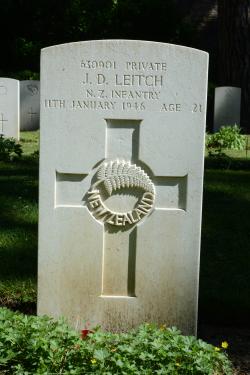Europe 14 - Day 19Cassino Commemoration Day 1: Mussolini's RomeAfter our brief walk through parts of Rome we now joined up with a specialist tour organised by Greg Osborne of Tempo Tours. 2014 was the 70th anniversary of the Battle of Cassino and this was an opportunity for many people to attend the commemoration services. This coach trip would take us from Rome, across to the Adriatic Coast and back to Cassino for the services and finally back to Rome. We started our tour with a day in Rome, criss-crossing the city in a large tour coach. It gave us a wonderful introduction to the chaos that are Italian roads, but better still, it provided our coach driver with the opportunity to display his formidable driving skills. Many times he headed bravely (to us) into narrow crowded streets, barrelled along at some incredible speed straight towards the oncoming car, or truck or bus. And then, magically, a small flick on the wheel and the truck hurtled past just millimetres from the side of our bus. You had to be of brave heart to sit beside the window on the left (driver) side. Several times I saw people involuntarily ducking so as to miss the oncoming truck or bus. The tour leader for this day was Dr Danila Bracaglia, an
historian who runs war-related tours of Rome and Cassino, see her website.
Villa TorloniaBut with confidence in our driver we first visited Villa
Torlonia, the official residence of Mussolini from 1925 to 1943. And would you believe it - the day we arrived the local staff had decided they needed an extra holiday so had gone on strike for the day. We never did get to see the inside, with its magnificent works of art, or the underground bunker! So we cut that visit short and moved on.
Museo Storico Della Liberazione - Historical Museum of the Liberation of RomeWe next stopped at the Historical Museum of the Liberation of Rome on Via Tasso. This was once the headquarters of the SS Kommandantur, where the major representatives of the Roman Resistance, many of whom lost their lives, were interrogated, tortured and imprisoned. The museum relates, mostly by means of graphical and photographical evidence, the events from September 1943 to June 1944. The building has been kept as a museum, with bricked-up windows and prison cells still intact. It was a sad reminder of the suffering of Rome and did not lend itself to photgraphs. On our way to the Museum we passed the Basilica of St John Lateran, a much more imposing and satisfying sight.
EUR - Esposizione Universale RomaEUR is a residential and business district in Rome, Italy located south of the city centre. The area was originally chosen in the 1930s as the site for the 1942 world fair which Mussolini planned to open to celebrate twenty years of Fascism. The EUR was also designed to direct the expansion of the city towards the south-west and the sea, and to be a new city centre for Rome. The planned exhibition never took place due to World War II. The uncompleted EUR development was severely damaged during the war. During the 1950s and 1960s the unfinished Fascist-era buildings were completed, and other new buildings were built in contemporary styles for use as offices and government buildings, set in large gardens and parks. We drove through the EUR for a quick look at the buildings,
however our bus driver was thwarted in one road by a car thoughtfully
parked in the middle, blocking it to all but the smallest
of cars. Via Rasella and the Massacre at the Ardeatine CavesOn March 23 1944 a group of 10 partisans attacked a heavily
armed column of German SS police, killing 33. In reprisal, 335 local
men and boys were seized off the streets the next day and trucked to
the Ardeatine Caves where they were all executed and buried. The caves
are now a national monument and a Memorial Cemetery.
Back into Rome for lunch with a Michelin Star chefWe negotiated our way back into the heart of Rome, drove down some impossibly narrow street, passed a remarkable number of fountains and debussed just around the corner from a roof-top restaurant named AntonelloCollona. Greg had told us it was worth the money (€30) but only after we had entered did we discover that this place had a Michelin Star !!
Commonwealth War Cemetery - RomeAfter lunch we found our way to the Commonwealth War Cemetery in Rome. There are 422 burials, of which only 10 are New Zealanders. There are two men from the 22 Battalion buried here - James Douglas LEITCH and John Carter MCQUIRE. Both died on 11 January 1946 while on final leave in Rome before the Battalion embarked for Japan. The pair were killed in a vehicle crash in central Rome, as noted in the Battalion's unpublished diary.
Back to previous day
Last updated: 26/10/2014 |
